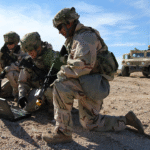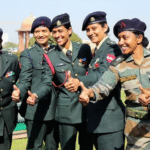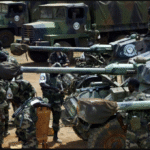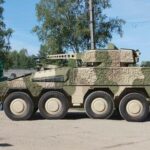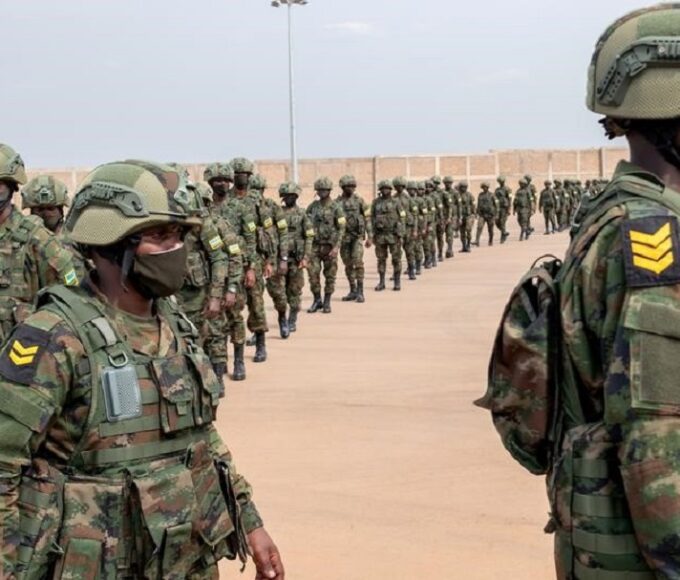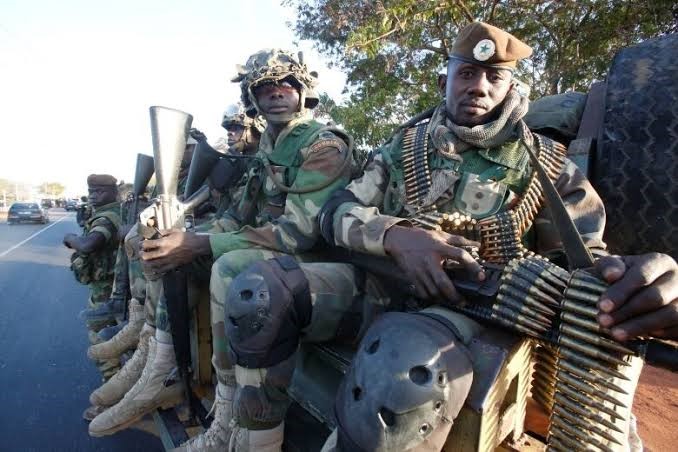Urban Warfare Challenges for African Armies in a New Security Era

Across Africa, conflict is moving into the cities. From Mogadishu to Maiduguri, from Tripoli to Bamako, African armies are increasingly called upon to operate in densely populated, highly complex urban environments where traditional battlefield rules no longer apply. In this new era of security threats—marked by asymmetric warfare, insurgency spillovers, civil unrest, and terrorism—urban warfare has emerged as a defining challenge for Africa’s ground forces.
Urban warfare is not new to the continent, but its scale, intensity, and frequency are changing. African armies, often trained and equipped for open-field and jungle operations, now face an urgent need to adapt tactics, equipment, training, and rules of engagement for combat in cityscapes filled with civilians, hidden threats, and shifting alliances.
The Urban Battlefield: Complex and Lethal
The defining feature of urban warfare is the unpredictability of the terrain and the proximity of civilians. In African cities experiencing conflict, buildings become bunkers, streets become kill zones, and humanitarian laws are tested in real-time.
Key challenges include:
- Restricted manoeuvrability: Tanks, APCs, and large infantry formations are often ineffective in narrow, congested environments.
- High civilian density: Combatants often hide among civilian populations, complicating targeting and increasing the risk of collateral damage.
- Multi-storey fighting: Buildings become vertical battle zones, requiring troops to fight “floor-by-floor” in operations that are manpower-intensive and risky.
- Infrastructure vulnerability: Cities contain critical national infrastructure—power grids, water treatment plants, telecom systems—that insurgents and terrorists often target or use as leverage.
According to a 2023 report by the International Institute for Strategic Studies (IISS), over 60% of all conflict-related fatalities in Sub-Saharan Africa now occur in urban or peri-urban areas, up from 35% a decade earlier.
Urban Conflict Flashpoints: African Case Studies
- Maiduguri, Nigeria
Since 2009, Maiduguri has been ground zero in Nigeria’s war against Boko Haram. Though the Nigerian Army has secured major roads and installations, insurgents continue to stage hit-and-run raids from urban enclaves. In 2021, a rocket attack during President Buhari’s visit underlined how Boko Haram had adapted to penetrate urban zones with both low-tech and improvised methods. - Tripoli, Libya
Between 2019 and 2020, Tripoli became the epicentre of high-intensity urban conflict between forces loyal to the Government of National Accord and those of the Libyan National Army. The use of drones, snipers, and foreign mercenaries created a multi-domain battlefield that overwhelmed local forces and drew in regional powers. - Mogadishu, Somalia
Al-Shabaab’s deep entrenchment in Mogadishu continues to frustrate Somali and AMISOM forces. The group’s tactics include vehicle-borne improvised explosive devices (VBIEDs) and coordinated assaults on hotels, ministries, and military posts. Urban insecurity has turned the capital into a fortress city, impeding state-building and development. - Ouagadougou and Bamako
Repeated terrorist attacks on hotels, embassies, and military barracks in the capitals of Burkina Faso and Mali have demonstrated how jihadist groups are moving from rural sanctuaries to urban targets, seeking high visibility and psychological impact.
Training Gaps and Tactical Shortfalls
Many African armies were structured with a focus on rural counterinsurgency or conventional battlefield doctrine inherited from post-colonial militaries. This has led to gaps in doctrine, training, and equipment for modern urban warfare.
Core deficiencies include:
- Lack of MOUT (Military Operations in Urban Terrain) training centres
- Insufficient room-clearing, sniper, and breaching capabilities
- Limited use of UAVs for urban surveillance
- Inadequate psychological preparation for civilian interaction and restraint under fire
A 2022 audit of African Peacekeeping Training Centres by the African Union Peace and Security Department revealed that only 9 out of 35 centres had urban warfare modules in their standard curricula.
In many cases, troops are forced to “learn on the job,” resulting in high casualties, operational setbacks, and strained civil-military relations. This has undermined trust in the military, especially in restive urban communities already suffering from unemployment and political marginalisation.
Adapting to the New Terrain: Innovations and Best Practices
Despite challenges, several African armies are responding with innovative reforms and partnerships:
South Africa’s MOUT Facilities
The South African National Defence Force (SANDF) has established urban warfare training villages at its Lohatla and Kimberley bases. These simulated urban environments allow infantry units to practice house-to-house clearing, urban patrolling, and drone-assisted operations.
Kenya Defence Forces (KDF) in Somalia
The KDF’s experience in AMISOM has led to a transformation in its doctrine, with increased emphasis on urban surveillance, UAV integration, and civil-military coordination. The KDF has also partnered with the U.S. and UK to enhance its urban operation readiness.
Nigerian Army’s Urban Tactics School in Lagos
Launched in 2022, this institution aims to train a specialised cadre of soldiers in urban search-and-destroy, hostage rescue, and counter-sniper operations, with instructors drawn from retired U.S. Marines and British SAS veterans.
Moroccan Royal Armed Forces
With growing concerns over internal security and North African instability, Morocco has invested in riot control capabilities, cyber-urban surveillance, and crowd dispersal tactics as part of its urban security doctrine.
Civilian Protection and Legal Imperatives
Urban warfare in Africa is not just a military challenge—it is a humanitarian and legal minefield. The principles of distinction and proportionality under international humanitarian law are difficult to uphold when adversaries hide in schools, hospitals, or apartment blocks.
African militaries must therefore build capacity in:
- Rules of Engagement (ROE) training
- Civilian impact assessments
- Humanitarian corridor establishment
- Psychological operations and communication campaigns
In 2023, the African Union launched the Urban Conflict and Civilian Protection Taskforce, in collaboration with the ICRC and ECOWAS, to standardise regional protocols for urban operations in conflict zones.
Strategic Recommendations: Rebuilding Urban Readiness
To meet the challenges of this new security era, African defence establishments must invest in:
- Dedicated MOUT Training Infrastructure in all major military academies.
- Urban Doctrine Development, specific to African megacities with unique demographic and architectural profiles.
- Technology Integration, including use of AI for urban surveillance, predictive modelling, and data-driven targeting.
- Intelligence-Led Urban Campaigns, integrating HUMINT with satellite and drone reconnaissance.
- Civil-Military Liaison Units, trained to de-escalate tensions and facilitate humanitarian access during urban campaigns.
Urban is the New Battlefield
The future of conflict in Africa will not be fought in jungles alone—but in the crowded markets of Kano, the high-rises of Nairobi, and the alleys of Bujumbura. Urban warfare demands new thinking, new tools, and new alliances—both with global partners and local communities.
African armies must evolve from garrisons to guardians, capable of operating effectively in urban environments while upholding the highest standards of professionalism and restraint. The war for stability will increasingly be a war for the cities—and Africa must be ready.
Urban Warfare by the Numbers (2023–2024):
- Over 60% of African conflict fatalities now occur in urban zones (IISS)
- Only 9 of 35 African military training centres offer MOUT modules (AU, 2022)
- 15+ major African cities have experienced insurgent attacks since 2020
- Nigeria, Somalia, Libya, and Burkina Faso lead in urban conflict deployments
- Estimated $3 billion needed continent-wide to upgrade urban combat readiness (AfCDC Projection, 2024)
For continuous coverage of Africa’s evolving security landscape, subscribe to African Defence & Security Magazine—where insight meets strategy.
Recent Posts
Categories
- Air & Aerospace16
- Border Security15
- Civil Security4
- Civil Wars4
- Crisis5
- Cyber Security8
- Defense19
- Diplomacy19
- Entrepreneurship1
- Events5
- Global Security Watch6
- Industry8
- Land & Army8
- Leadership & Training5
- Military Aviation5
- Military History27
- Military Speeches1
- More1
- Naval & Maritime9
- Resources2
- Security12
- Special Forces1
- Systems And Technology9
- Tech6
- Uncategorized3
- UNSC1
- Veterans6
- Women in Defence9
Related Articles
LAND & ARMY – AFRICA’S ELITE ARMY UNITS: WHO SETS THE STANDARD?
By late 2025, Africa’s elite army units stand at the sharp end...
ByKing Richard Igimoh, Group Editor ALODecember 22, 2025THE EVOLUTION OF AFRICAN INFANTRY WEAPONS from 1960
In the wake of widespread decolonization across Africa during the 1960s, newly...
ByKing Richard Igimoh, Group Editor ALOSeptember 5, 2025Private Military Contractors in Africa – Mercenaries, Partners, or Spoilers?
In Africa’s security environment, one of the most polarising forces is the...
ByKing Richard Igimoh, Group Editor ALOAugust 12, 2025Army Modernisation in West Africa: Ghana, Nigeria, and Côte d’Ivoire in Focus
West Africa stands at the frontline of Africa’s battle for peace, stability,...
Byadmag_adminJune 27, 2025



